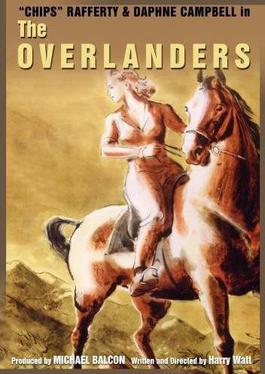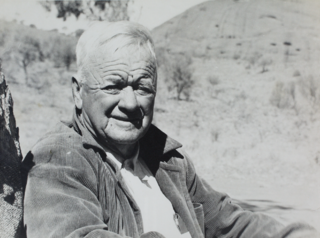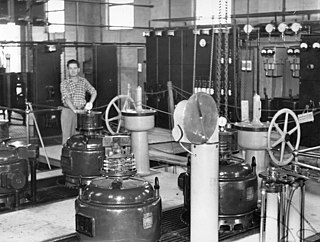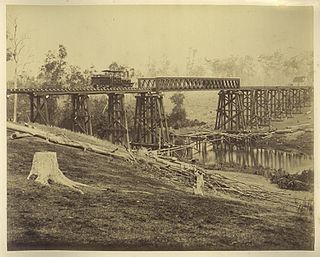 First edition | |
| Author | Ion Idriess |
|---|---|
| Country | Australia |
| Language | English |
| Genre | non-fiction |
| Publisher | Angus and Robertson |
Publication date | 1946 |
In Crocodile Land is a 1946 Australian book by Ion Idriess about life in the Northern Territory. [1] [2]
 First edition | |
| Author | Ion Idriess |
|---|---|
| Country | Australia |
| Language | English |
| Genre | non-fiction |
| Publisher | Angus and Robertson |
Publication date | 1946 |
In Crocodile Land is a 1946 Australian book by Ion Idriess about life in the Northern Territory. [1] [2]

Henry Daglish was an Australian politician who was the sixth premier of Western Australia and the first from the Labor Party, serving from 10 August 1904 to 25 August 1905. Daglish was born in Ballarat, Victoria, and studied at the University of Melbourne. In 1882, he worked as a mechanical engineer but soon switched to working in the Victorian public service. He first stood for election in 1896 but failed to win the Victorian Legislative Assembly seat of Melbourne South. He then moved to Subiaco, Western Australia, where he found work as a chief clerk in the Western Australian Police Department. In 1900, Daglish was elected to the Subiaco Municipal Council and in April the following year, he was elected to the Western Australian Legislative Assembly as the member for the newly created seat of Subiaco, becoming one of six Labor members in the Western Australian Legislative Assembly. The party elected him as its whip, and he resigned from the Subiaco council on 1 May 1901. On 1 December 1902, Daglish was sworn in as mayor of Subiaco, having been elected the previous month.

Niuafoʻou is the northernmost island in the kingdom of Tonga. One of the Niua Islands, it is located in the southern Pacific Ocean between Fiji and Samoa, 574 km (357 mi) north of Tongatapu island group and 337 km (209 mi) northwest of Vavaʻu. It is a volcanic rim island with an area of 15 km2 (5.8 sq mi) and a population of 431. The volcano is active and has erupted regularly since 1814, with its last major eruption in 1985.

Coolgardie–Esperance Highway is a 370-kilometre (230 mi) Western Australian highway between Coolgardie and Esperance. It runs in a north–south direction linking the state's Eastern Goldfields to the coast.
The Caledon Bay crisis refers to a series of killings at Caledon Bay in the Northern Territory of Australia during 1932–34, referred to in the press of the day as Caledon Bay murder(s). Five Japanese trepang fishers were killed by Aboriginal Australians of the Yolngu people. A police officer investigating the deaths, Albert McColl, was subsequently killed. Shortly afterwards, two white men went missing on Woodah Island (with one body found later). With some of the white community alarmed by these events, a punitive expedition was proposed by Northern Territory Police to "teach the blacks a lesson".

The Overlanders is a 1946 British-Australian Western film about drovers driving a large herd of cattle 1,600 miles overland from Wyndham, Western Australia through the Northern Territory outback of Australia to pastures north of Brisbane, Queensland during World War II.

William Edward Harney, best known as Bill Harney, was an Australian writer. Most of his early life was an itinerant one of poverty and hardship, punctuated by tragedy, spent mainly in the outback. He is notable for his writings about the Aboriginal peoples of Australia's Northern Territory.

Captain Sydney Dalrymple, was an Australian First World War flying ace, credited with five aerial victories while serving in the British Royal Flying Corps and Royal Air Force.
Lee Robinson was an Australian producer, director and screenwriter who was Australia's most prolific filmmaker of the 1950s.

In 1932, pilot Hans Bertram and mechanic Adolph Klausmann were rescued while attempting to circumnavigate the world in a Junkers W 33 seaplane. After departing Koepang, Dutch Timor, they endured a storm in the Timor Sea on 15 May and were forced to land in a remote coastal area of the Kimberley region in northern Western Australia. The stranded men spent almost six weeks severely deprived of food and water and were close to death when they were rescued by a group of local Aboriginal fishermen on 22 June.
Mount Doreen Station is a 7,337-square-kilometre (2,833 sq mi) pastoral lease operating as a cattle station in the Northern Territory of Australia.

Yaamba is a rural town and locality in the Livingstone Shire, Queensland, Australia. In the 2016 census, the locality of Yaamba had a population of 62 people.
The District Council of Gladstone was a local government area in South Australia. It was proclaimed on 10 August 1876 as the District Council of Yangya, named for the cadastral Hundred of Yangya, but was renamed Gladstone after its main town on 14 August 1879. Gladstone had been built as a private township very close to the hundred boundary, and the adjacent government township of Booyoolie, built not long after, was in the adjacent Hundred of Booyoolie, and formed as the separate District Council of Booyoolie, dividing the twin towns into two separate municipalities based on their respective hundreds. It gained the Booyoolie township from that council in 1879, and acquired the remainder of what had been the southern portion of the Booyoolie council on 12 August 1880. It then gained the remainder of the Hundred of Yangya under the District Councils Act 1887.
The District Council of Pirie was a local government area in South Australia from 1892 to 1996. It surrounded, but did not include, the city of Port Pirie, which had its own municipal government as the City of Port Pirie.
The District Council of Port Broughton was a local government area in South Australia from 1892 to 1997 seated at the town of Port Broughton.
The District Council of Bute was a local government area in South Australia from 1885 to 1997.
The Corporate Town of Burra was a local government area in South Australia from 1876 to 1969.

Carl Atkinson (-1985) was a renowned Australian diver and salvage expert from Darwin in the Northern Territory of Australia.
Groper Creek is a coastal town and rural locality in the Shire of Burdekin, Queensland, Australia. In the 2016 census, Groper Creek had a population of 62 people.

Grahams Creek is a rural locality in the Fraser Coast Region, Queensland, Australia. In the 2021 census, Grahams Creek had a population of 149 people.
Kings Creek is a rural locality in the Toowoomba Region, Queensland, Australia. In the 2021 census, Kings Creek had a population of 55 people.